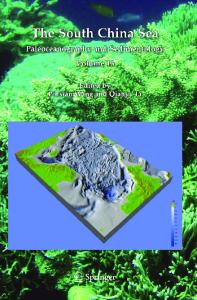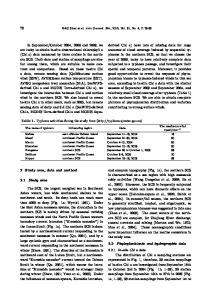A complex gas hydrate system imaged jointly using MCS and OBS data from the northern South China Sea
- PDF / 3,874,700 Bytes
- 15 Pages / 595.276 x 790.866 pts Page_size
- 80 Downloads / 321 Views
ORIGINAL RESEARCH PAPER
A complex gas hydrate system imaged jointly using MCS and OBS data from the northern South China Sea Bin Liu1 · Xiangchun Wang2 · Yunxia Xu1 · Pengfei Wen1 · Liqing Li1 · Heng Zhang1 Received: 14 May 2020 / Accepted: 14 September 2020 © Springer Nature B.V. 2020
Abstract Much of our knowledge of gas hydrate in the Dongsha area of the South China Sea has been gained through intensive geophysical surveys and drilling. However, many factors remain unclear, such as the co-existence of shallow gas hydrate and deeper gas hydrate. This lack of clarity is partially due to the lack of a depth-domain velocity model and accurate imagery of the gas hydrate-bearing sediments. In this study, pre-stack depth migration (PSDM) is used to produce subsurface images using a depth-domain velocity model from OBS tomography as the migration velocity. A simple initial velocity model was built using the seafloor depth information derived from multi-channel seismic (MCS) data. This simple model was used to build a more accurate velocity model by using first arrival time tomography from OBS data. Three different approaches were used to assess the reliability of the velocity model. Resolution tests and uncertainties analysis were used to further evaluate the model. The final PSDM image revealed some features more clearly than they were seen on the time migration image. These features help better explain the complex gas hydrate system. The depth of a bottom-simulating reflector (BSR) was picked directly from the PSDM image. This BSR is very consistent with the drilling result. Our work highlights the importance of PSDM in the study of gas hydrate in complex settings and highlights the potential and value of using OBS refraction in building shallow velocity models. Keywords MCS · OBS · First arrival tomography · PSDM · BSR
Introduction Gas hydrate is an ice-like substance composed of water and gas, stable at high pressure and low temperature (Hyndman and Spence 1992; Kvenvolden 1993). Gas hydrate occurs widely in marine sediments and the sediments of permafrost areas. It has gained attention recently because of its role in global climate change (Ruppel and Kessler 2017), its potential as an energy source and its role in seafloor stability and geo-hazards (Wallmann et al. 2012; Sultan et al. 2004). Many countries have launched national programs to investigate gas hydrate in the marine and permafrost environments.
* Xiangchun Wang [email protected] 1
MLR Key Laboratory of Marine Mineral Resources, Guangzhou Marine Geological Survey, China Geological Survey, Guangzhou 510075, China
School of Geophysics and Information Technology, China University of Geosciences (Beijing), Beijing 100083, China
2
The Dongsha Sea area, in the northern South China Sea (Fig. 1), represents the most promising area for the occurrence of gas hydrate from a tectonic and sedimentary perspective (McDonnel et al. 2000). Extensive geophysical surveys have been conducted to evaluate the potential for gas hydrate in this region, making th
Data Loading...











